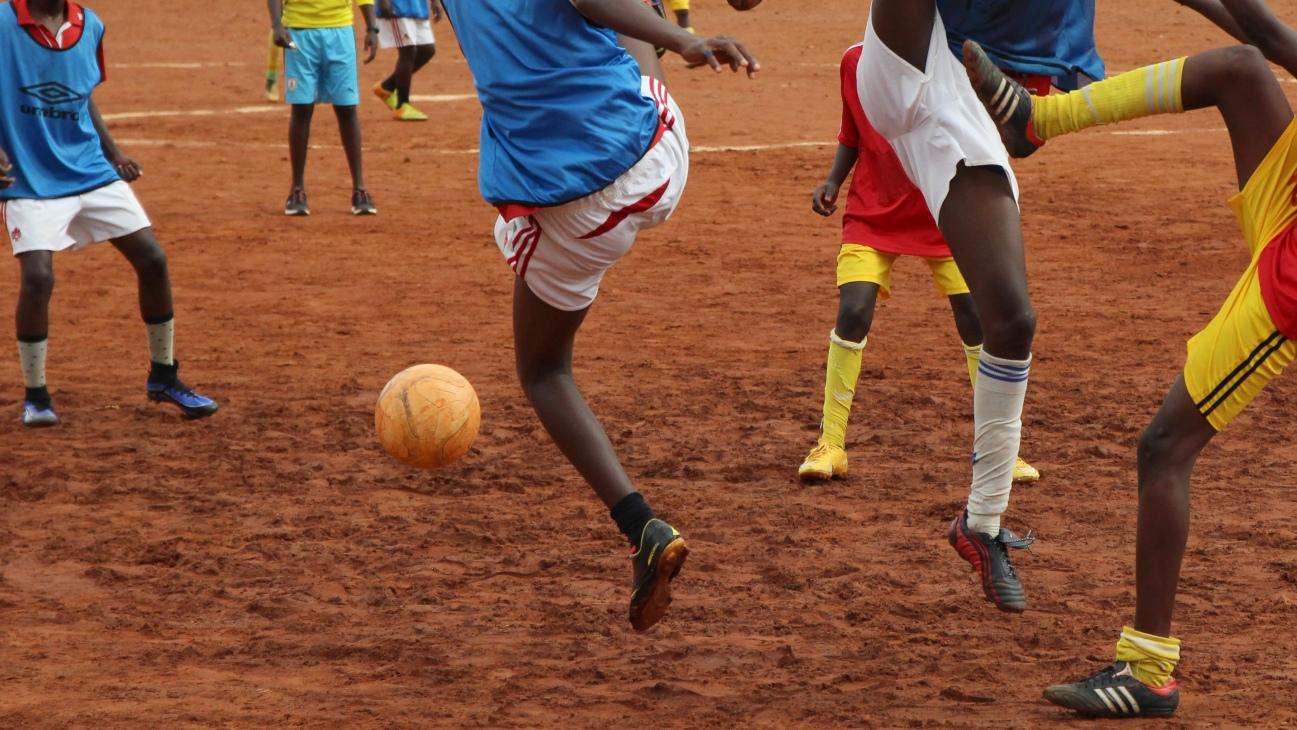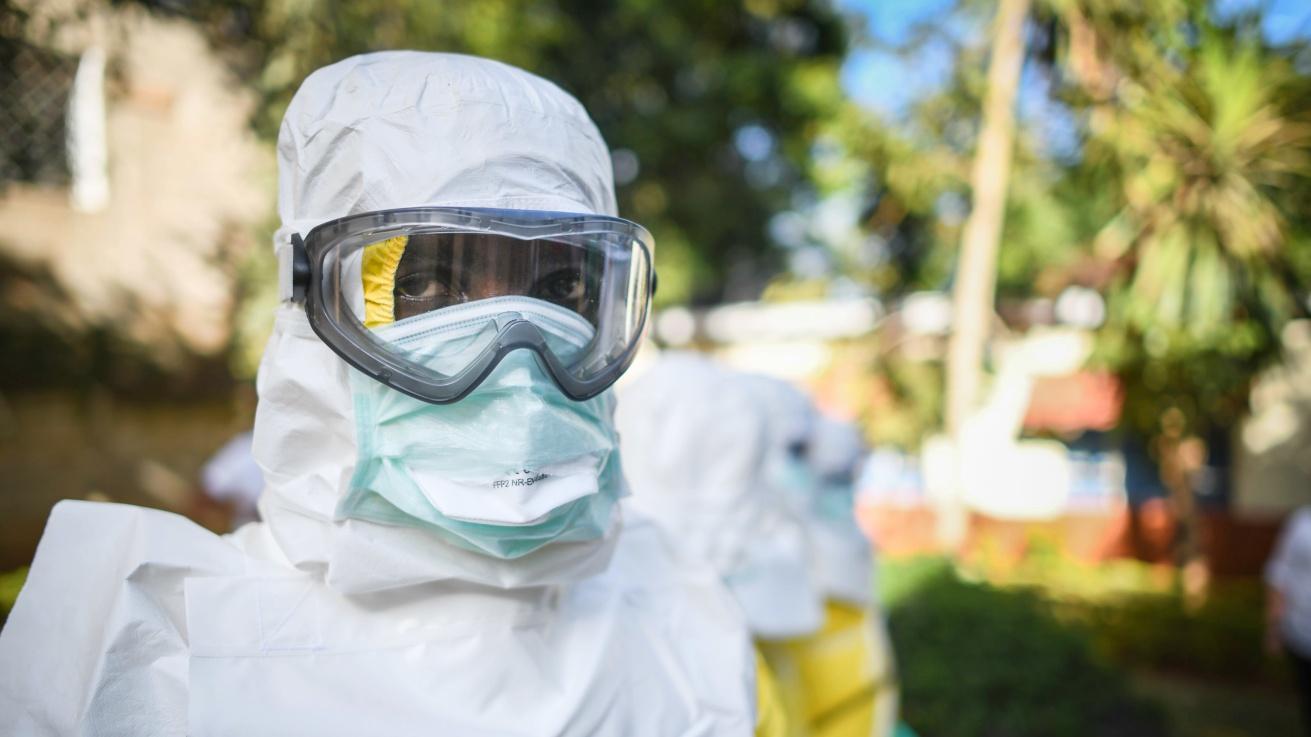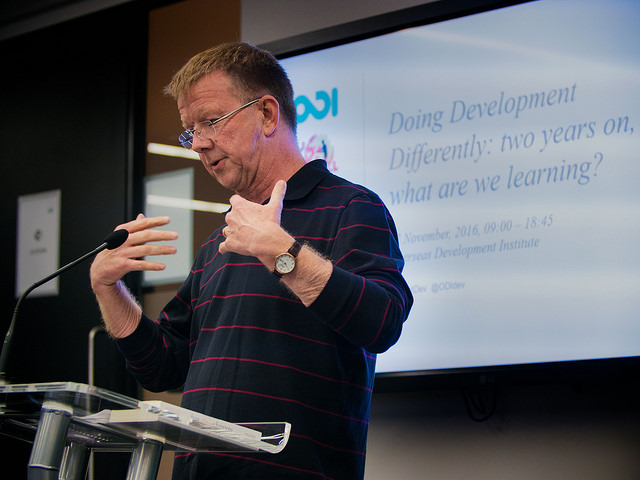Melissa Parker and Tim Allen discover how long-standing customary forms of governance played a critical role in ending the Ebola outbreak in Sierra Leone.
This article is part of the #PublicAuthority blog series with the Centre for Public Authority and International Development. See all posts from the series addressing the Ebola outbreak here.
‘I acted to save the lives of my people, but what I did will always play on my conscience.’ This was a comment by one of the most important paramount chiefs in Sierra Leone about his role in managing the outbreak of Ebola in 2014-2016. Four years after the beginning of the outbreak, it is gradually becoming evident how the disease affected, and continues to affect, peoples’ lives.
Research on Ebola and public authority by teams based at Njala University in Sierra Leone, the London School of Hygiene and Tropical Medicine and the LSE has revealed, the importance of understanding how long-standing customary forms of governance played a critical role in ending the outbreak.
In the end, it has been argued, it was not the soldiers, the humanitarian iNGOs, or the World Health Organisation who played the most important role in containing the spread of the disease. Instead, it was the people themselves and the public health measures imposed by paramount chiefs and their subordinates, including restrictions on movement, which turned the situation around. As Paul Richards, author of the book, Ebola: How a people’s science helped end an epidemic, has put it: ‘the paramount chiefs played a blinder!’ Our research confirms that was the case. However, for those involved in enforcing byelaws, it posed enormous challenges, not least because it necessitated setting aside normal moral obligations to their own family members. Also, there was quite a bit more going on that has been barely noticed.

Image Credit: Tim Allen
The people of Mathiane were among those on the receiving end of byelaws enacted by these customary authorities. The small village was seriously affected by the outbreak. Based on our local investigations, at least fifty-six people were infected and thirty-eight people died from the virus. The numbers who died were much higher than those recorded in official documents, partly because some deaths were not reported to the district. Much that occurred during the epidemic has been hidden, and for very good reasons.
One of the main ways in which Ebola was transmitted in Sierra Leone was through human to human contact immediately before and after the death of infected people. Symptoms of Ebola include bleeding from bodily orifices, diarrhoea and vomiting. These secretions are highly infectious. Apart from close contact with those suffering from the illness, the normal processes of washing a corpse before burial in Sierra Leone made burial customary rites a major risk factor. But managing the final stages and the passing of a loved one is a hugely important aspect of social life. It was something that people in Mathiane, and people all over Sierra Leone, were reluctant to set aside. To do so was to set aside the ties of mutuality that make life meaningful.
Members of the local burial team in Mathiane explained to the research team the reason why many of the infections and deaths were never noticed by outsiders. They were unwilling to ring the official phone line – 117 – to report incidents. They feared that their loved ones would not be cured at the Ebola Treatment Centre and their bodies would never be returned to their families. They knew that that was happening from accounts being given to them by friends and relatives living in the towns and more closely monitored places.
The threat of ringing to report infections and deaths was enough to ensure confidentiality about another approach. Residents in Mathiane reported to their own burial team, made up of a group of men living in the village. Sick people were taken to hidden farms and locations in the bush, and when there were deaths, the bodies were buried late at night in locations that would not be recognised by outsiders as graves.

Image Credit: Melissa Parker
Mutuality in Mathiane is readily evident to anyone who spends time there. Families care for each other in intimate ways as part of daily life. They farm together, they share what they have. The open affection they show to each other’s’ children is striking. To abandon a resident to those who do not know them or love them is a violation of the social fabric, and was impossible to accept. Public authority in the village is premised on caring for each other in adversity, and that moral code was strong enough to make public authority associated with paramount chiefs, let alone aid agencies or the government, less important.
Although people in Mathiane heard about the public health regulations on the radio, they did not accept them, or even believe that they could possibly relate to them. To act on them would have been a betrayal of trust – an abomination. Instead, they developed their own strategies to contain infection. This included hiding sick people in places where they would not infect others, and encouraging them to consume pepper soup and drink a mix of lime and honey at regular intervals. It was a strategy that some remembered being particularly effective for the treatment of smallpox in the past. For those that did not survive, it was at least possible to bury their kin with safety and dignity. The local burial team believe they acted in the right way, and that they saved the lives of many who would otherwise have died.
It is possible that some of those they took away from the village, across swamps and streams, to places where outsiders would not find them, may have had malaria or other infections. But some certainly had Ebola, and many survived, because of the care they received from relatives – notably the continuous rehydration, which was only introduced in the official treatment centres after the intervention of Ugandan doctors in late 2014. The Ugandan doctors explained how they had massively reduced mortalities during the Ugandan epidemic of 2000, and once it was introduced in Sierra Leone, mortalities for those in treatment centres dropped from 70 per cent to 30 per cent.
Nevertheless, the people of Mathiane could not keep their secrets indefinitely. As infections spiralled in the region, and fatalities increased, it proved impossible to conceal the burials from outsiders. Information leaked to the chiefdom authorities and the District Ebola Response Team, who were trying to co-ordinate the response in the area. The customary chief was summoned to a meeting in a neighbouring village, with other chiefs in the area, and told that large fines would be imposed on anyone burying people without official sanction and the involvement of accredited burial teams. He knew that his own father was infected with Ebola, and when he returned to Mathiane, he was told his father had died, and had been buried by the local burial team.
Fearful that, because of local practices, the infection in Mathiane was not being contained, the authorities mobilised chiefdom authorities and the army to go to the village and seek confirmation that ‘secret’ burials were occurring. No-one in the village was willing to divulge the information. One child was even offered a substantial sum of money to tell the truth, but he refused to say anything.

Resorting to violence, the soldiers randomly pulled people out of their houses and beat them, including members of the local burial team. In the end, a schoolchild, fearing for his life, succumbed to the pressure to talk and told them what had been happening. The town chief was removed from his position and a temporary town chief appointed, who later died in unexplained circumstances. He may have been murdered. Other secrets remain too. One woman explained to the research team that, shortly after the army entered the village, her mother died from Ebola. Her son fell ill while the house was quarantined, but she kept it hidden from the soldiers at home. He recovered.
More than three years have passed since this event, and some people are still suffering from the injuries as a result of the intervention by the army. Looking back on these events, elders say there is much enduring pain. There is also much frustration. Due to Ebola, there has been a great deal of interest in Mathiane, with visits by iNGOs to the village, and this has raised expectations that assistance will follow. However, the reality has so far been a set of empty promises.
Burial groups have been disbanded, visits from district officials have stopped, a nurse who is based at a Maternal and Child Health Post in a neighbouring village about an hour’s walk away perhaps visits once a month, but she has little to offer other than vaccinations for children under five. The health system is as weak as ever; and the promised school has not materialised. The village has done its best to make do with what is to hand. In classrooms made of bamboo sticks, the volunteer teachers manage with one blackboard between them.
Emma Kargbo, one of the teachers, explained:
“The children are so eager and enthusiastic. When asked what they want to be when they grew up – one wants to be a doctor, two that want to be teachers, and three say they want to be President and bring development to their home… but at the moment there is little hope of such dreams coming true. All that money was spent on Ebola. So many NGOs came and made promises. But nothing is left behind. We are trying to help the children … but it is a circle of suffering.”

Her views were reiterated by the recently elected section chief, Salamie Kamara (who is responsible for 17 villages, including Mathiane):
“The government has disappointed us. During Ebola, we saw a lot of ambulances. If someone dies, or if you are sick, they will take you to the hospital. Are they waiting for Ebola again, before they help us? One woman was meant to have given birth to twins. The umbilical cords were joined together. The TBA (traditional birth attendant) here had no idea what to do, and there was no way to rush her to the health centre. One child had already come out of the womb. It brought disgrace to us and everyone. She suffered so much. If a health centre had been there, or an ambulance had been around, they could have taken her to the health centre. The mummy survived, but her children died. The nurse eventually came here, but it was too late to do anything…. It is not just the ambulances which have disappeared. Even the things that were put in place to monitor and control Ebola infection are no longer there. We in Mathiane were punished for caring for each other and not following instructions. But who cares about us now? What will happen when there is another epidemic?”
Read more about #PublicAuthority and visit our website.
Melissa Parker is Professor of Medical Anthropology at the London School of Hygiene and Tropical Medicine.
Tim Allen is Professor of Development Anthropology at LSE and Director of the Firoz Lalji Centre for Africa.
The views expressed in this post are those of the author and in no way reflect those of the Africa at LSE blog, the Firoz Lalji Centre for Africa or the London School of Economics and Political Science.






4 Comments